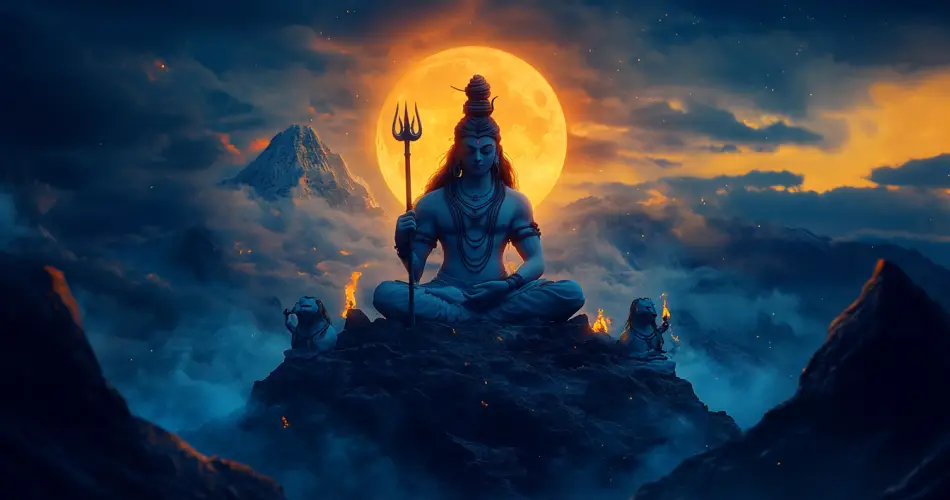Hindu mythology has a rich collection of amazing stories, legends, and divine narratives that have been part of the cultural and religious identity of the Indian sub-continent for thousands of years. These stories talk of gods, goddesses, mythological creatures and even the creation of the universe itself.
It is also filled with relatable human emotions and dilemmas that resonate with people even today. Why are these stories still relevant? What do they teach us about life, morality, and the universe?
Sacred Texts and Sources for Hindu Mythology
The sacred texts in Hinduism are generally divided into the Shruti and the Smurti. These texts form the foundation of Hindu mythology, spirituality, philosophy and culture.
The Shruti (“that which is heard”)
These are timeless wisdom believed to have no human or divine authors. They are transmitted by sages who gain supreme knowledge and realise the supreme truth.
These texts are considered highly authoritative in Hinduism and contain instructions regarding spiritual worship, rituals, and philosophical teachings.
Texts classified under the Shruti include the Vedas and Upanishads. These were initially passed down orally until they were written down in Sanskrit between 1500 and 500 BC.
The Smurti (“That which is remembered”)
Unlike the Shruti, the Smurti are associated with specific authors. They are believed to be accurate accounts of historical events and wisdom remembered and written down for future generations.
Although these texts are not as authoritative as the Shruti, the knowledge they contain serves as lifestyle guides.
Texts under the Smurti include epics, such as the Ramayana and the Mahabharata, which narrate the stories of gods, heroes, and cosmic battles.
The Puruna is another Hindu text classified under the Smurti. It is an exhaustive record of Hindu gods, goddesses, folklore, and mythical creatures. It is divided into 18 parts and contains about 400,000 verses.
The Creation Story in Hindu Mythology
Hinduism contains several philosophical points and views; thus, there are numerous theories about the creation of the world.
In the most popular of these stories, It is believed that the universe is not a single entity; instead, an infinite number of universes exist simultaneously in the multiverse.
Lord Vishnu is the personification of this multiverse. According to the myths, he sleeps on the coils of the serpent Shasha, who floats in the cosmic ocean.
There are three deities that perform cosmic functions of creation, preservation, and destruction. Brahma is the creator in each universe, Shiva is the destroyer, and Lord Visnu is the preserver of all the universes.
It is said that with each breath taken by Lord Visnu, thousands of universes come into existence, each with its own Brahma and Shiva. Our universe is just one out of these many universes, and we have our own Brahma and Shiva.
Everything in our universe is created by our Brama, who divided the world into the heavenly, hellish and earthly. He also made all living entities to multiply and fill the earth.
This universe will eventually be destroyed when Braman is 100 years old. This is approximately equal to 311 trillion human years. After this, Brama will die, and this universe will ultimately be destroyed by fire or water.
This characteristic creation and destruction cycle is similar to the creation mythology of the Aztecs.
Death and Afterlife in Hinduism
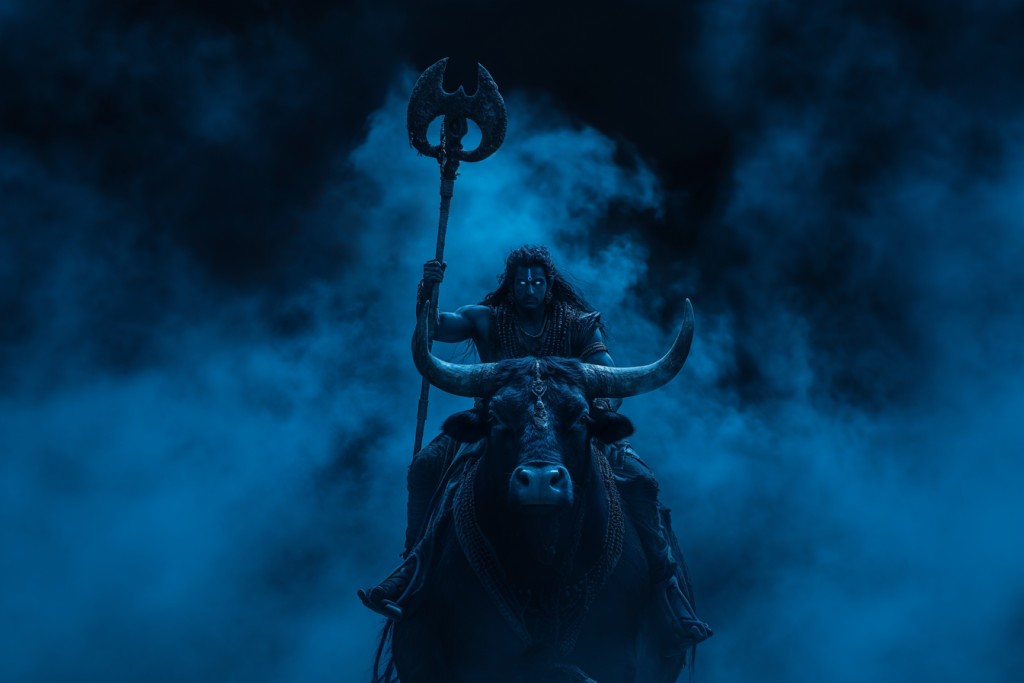
In Hindu mythology, death and the afterlife are intricately linked to the concepts of karma (a spiritual aggregate of a soul’s positive and negative actions) and reincarnation.
The soul is immortal, and death is not viewed as the end but rather a transition in the eternal cycle of birth, death, and rebirth, also known as samsara. The cycle of reincarnation is endless, and the devote Hindu aims to achieve liberation from the eternal cycle of samsara by living saintly lives in each reincarnation until the soul attains Moksha and enters into a state of everlasting bliss. Moksa can also be achieved through special rites or rituals.
After death, the soul may travel to one of several realms. If the person has led a virtuous life, they may go to Svarga (heaven) or even attain Moksha. However, if their karma is unfavourable, they may descend to Naraka (hell), where they endure suffering until their negative karma is exhausted.
For a soul that has not achieved Moksha, the stay in Svarga or Naraka is temporary, and they will soon be reborn after their karma is exhausted.
Through rituals like the antyesti (funeral rites), family members help guide the soul in its journey. Hindu mythology emphasizes that death is not an end but a transformation, ultimately aiming for spiritual liberation.
Gods and Goddesses in Hinduism
Hinduism contains several gods and goddesses that play a central role in embodying various aspects of nature, morality, and the afterlife. These deities are deeply connected to Hindu philosophy and culture.
Although they are supernatural beings, stories involving these deities show them exhibiting human emotions and characteristics such as love, anger, pride, and remorse.
Hindu deities are often shown with multiple hands, legs and faces. This is intended to emphasize the deity’s numerous powers and ability to carry out different tasks simultaneously.
Below are some major Hindu Gods
Brahma: Creator god

Brahma is believed to be responsible for the creation of everything in the universe. He is part of the Trimurti alongside lord Vishnu and Lord Shiva. Brahama is also associated with knowledge and the Veda.
He is sometimes depicted with four heads, and his favourite mount is the Hamsa, an aquatic migratory bird. Despite being the creator god, the worship of Brahma has reduced significantly compared to other members of the Trumurti.
There are several minor deities believed to be born from the mind of Brahma; these include Angiras, Atri, Bhrigu, Chitragupta, Daksha, Himavan, Jambavan, Kama, Kratu, Kumaras, Marichi, Narada, Pulaha, Pulastya, Shatarupa, Sindura, Svayambhuva Manu, Vashishtha.
Vishnu: Supreme God
Vishnu was worshipped as the sustainer of the universe and also the maintainer of the cosmic order. It is believed that the god sleeps in the cosmic ocean, and with every breath he takes, he creates many universes.
As the maintainer of cosmic order, Visnu is said to reincarnate in various forms to protect the world from destruction. The various forms of lord Vishnu are known as avatars.
There are 10 of these avatars, but the most popular of these avatars include Rama and Krishna, central figures in the epics Ramayana and Mahabharata. Vishnu is often depicted with a blue complexion, holding a discus, conch, lotus, and mace. His consort, Lakshmi, is the goddess of wealth and prosperity.
Shiva: God of Destruction
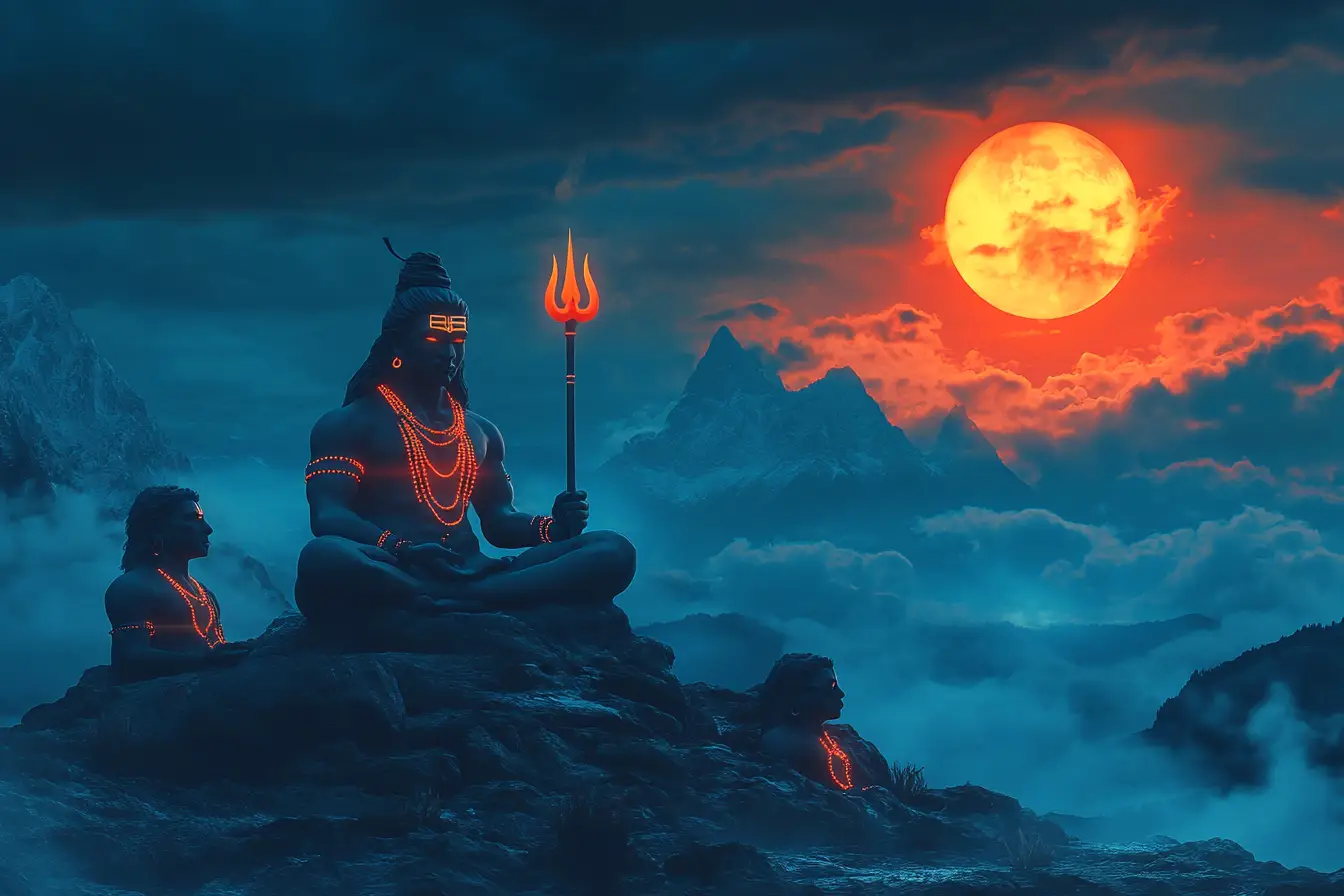
Shiva is the third member of the Trimurti. He is an important part of the cyclic nature of existence that is central to the creation story in Hinduism.
Shiva is also associated with protection and benevolence towards his devotees. According to Hindu records, the god once drank the poison in order to protect the world.
Depictions of lord shiva show him in matted hair, a crescent moon, and a third eye. He resides on Mount Kailash and is often shown in deep meditation.
Shiva is also depicted as a family man; his wife is Parvati, and his two children are Ganesha and Kartikeya. In other accounts, Pervati is associated with seven separate goddesses, all believed to be Shiva’s consorts.
Yama: God of the Underworld
Yama is the god of death and the underworld in Hindu Mythology. He rules over the Naraka and is responsible for punishing souls that have accumulated negative karma during their lifetime. Yama is one of the first deities mentioned in the Rigveda; he is said to be the first mortal to die.
Yama is often depicted as a stern figure, sitting on a buffalo and wielding a noose (Pasha) to capture the souls of the dead. His attendants, known as Yamadutas, bring the souls to him for judgment.
He maintains a meticulous record of everyone’s actions, and based on their karma, he determines whether a soul is to be reborn, ascend to Svarga (heaven), or descend to Naraka for punishment.
Durga: Goddess of War
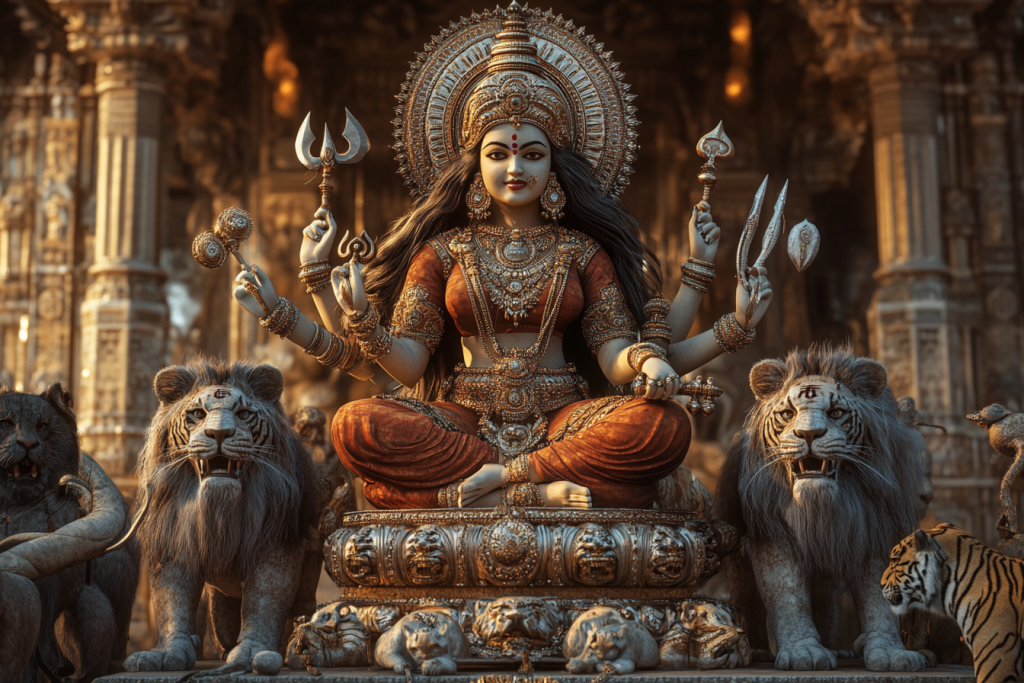
Durga is one of the most powerful and revered goddesses in Hindu Mythology. She is known as the Divine Mother goddess and is associated with protection, strength, destruction and war.
She is also a protector of the oppressed. Durga unleashes her fury on evil forces and demons that threaten the peace and prosperity of the world.
She is often depicted with about ten arms, each of which wields different weapons used by the gods in cosmic battles.
Read Also: Kamhadenu, the divine mother of all cattle.
Kali: Hindu Goddess of Destruction
Kali is another important goddess in Hindu mythology. She is associated with death, time, and the destruction of demons.
Kali is a believed to be a manifestation of Durga, who was created to aid in the defeat of the demons. Cults like the thugee are dedicated to the worship of Kali in India.
Monsters and Mythological creatures in Hindu Mythology
In Hindu mythology, hundreds of fascinating mythical creatures exist. These beings are often divine, semi-divine, or demonic entities that embody natural elements or Universal concepts.
Some of these creatures could also be born out of ancient extinct animals that the ancient Indians came across.
Below are some of the most popular mythical creatures in Hinduism.
Makara -The divine Mount
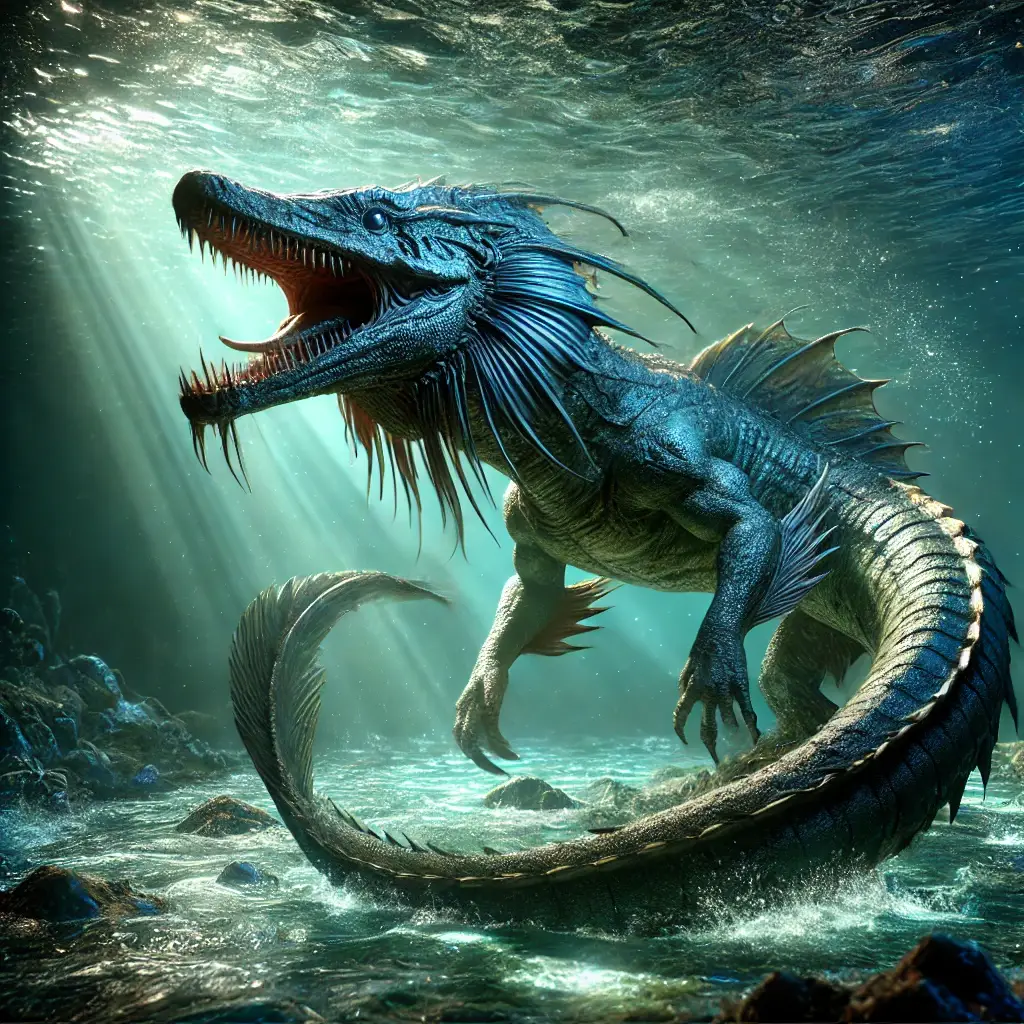
In Hindu Mythology, Makara is a sea creature that serves as the mount of various Hindu deities, including the Ganga, the goddess of rivers, and Varuna the god of the sky and ocean.
Physically, the Makara looks like a Marsh crocodile or water monitor. Some other depictions portray the creature with the front half of an elephant or deer and the hind features of a sea creature such as a dolphin or snake.
The Makara is not an evil creature; when it is not transporting the gods around, it guides gateways and thresholds. Statues of this creature can be seen in front of several Hindu and Buddhist temples.
Vatela: Spirit of the Dead
The Vatelas are evil spirits that are believed to prowl cemeteries and Charnel grounds in Hindu Mythology. These spirits are trapped in the human world and are unable to move on to the afterlife.
According to the Myths, the Vatela Kill children, cause miscarriages and drive people mad. They also have extensive knowledge of human nature and can see into the future.
The Vatela are similar to the nachzehrer in German mythology.
Yakshas and Yakshinis
These are nature spirits that are associated with the forest, fertility, water and treasures. They are generally seen as benevolent spirits; however, there are darker versions of the spirits that track and attack travellers.
In Jainism, these spirits are depicted as guardians of the Jin image.
Syama and Sabala: Four-eyed Underworld dogs

In Hindu Vedit traditions, Syama and Sabala are believed to be the dogs of Yama, the Hindu god of death and the underworld.
They are four-eyed dogs, and they guard the trial that leads the dead to Yema. Sometimes, the Syama and Sabala are sent to the world to collect souls for their master.
There are several other mythological creatures in Hindu mythology. These include Airavat, Navagunjara, Pishachas, Timingila, and the Shesha.
Hindu Mythology In Art and Culture

Hindu mythology has profoundly influenced art and culture in the Indian subcontinent and beyond. It has shaped religious, philosophical, and social narratives for millennia.
These stories are visually expressed in paintings, sculptures, dance, music, and architecture. They serve as both religious symbols and cultural markers.
Hindu Mythology in Visual Arts
One of the most recognizable representations of Hindu mythology in art is temple architecture. For instance, the Chola temples in South India are renowned for their detailed bronze sculptures of gods and goddesses. They also feature scenes from cosmic events like the churning of the ocean (Samudra Manthan)
In visual arts, Hindu myths have inspired countless paintings, from the delicate miniatures of the Mughal period to the vibrant colours of Madhubani and Pattachitra art.
Hindu Mythology in Dance
Classical Indian dance forms, such as Bharatanatyam and Kathak, also bring Hindu mythology to life through expressive movements and gestures.
Performers narrate stories of divine love, cosmic creation, and the eternal struggle between good and evil, connecting audiences to the timeless spiritual lessons embedded in these myths.
